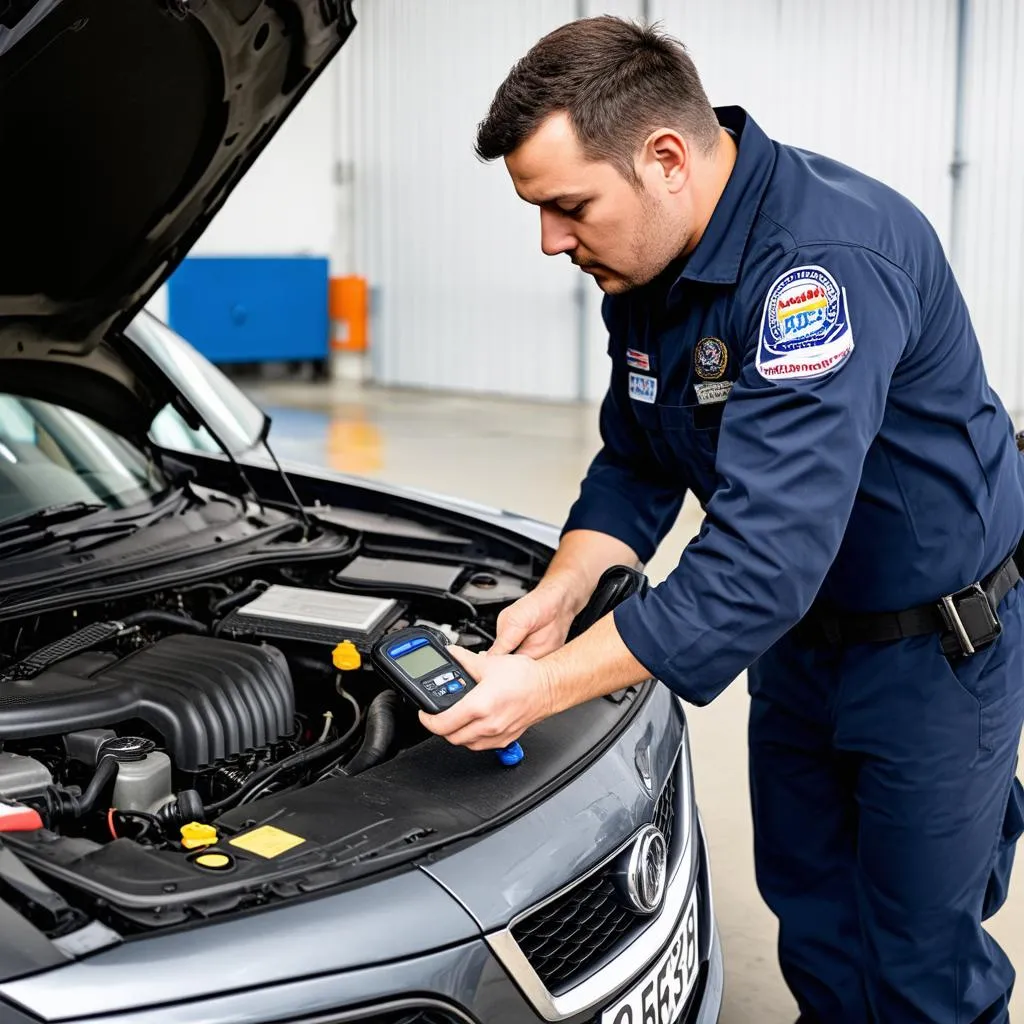“A stitch in time saves nine,” goes the old saying. This holds especially true for our vehicles, where ignoring a minor hiccup can lead to major headaches down the road. Take, for instance, the mysterious Obd 1 Code 22. Sounds like something out of a sci-fi movie, right? But in the automotive world, it’s a common issue, especially for older cars. Let’s unravel this code and learn how to address it.
What Does Obd 1 Code 22 Mean?
Imagine this: You’re all set for a road trip, the open road beckoning. You turn the key, but instead of the satisfying roar of the engine, you’re met with a stubborn silence. A quick check reveals the dreaded “Check Engine” light glaring back at you. You hook up your trusty OBD 1 scanner, and there it is: Code 22.
This cryptic code is your car’s way of saying, “Hey, there’s something fishy with my coolant temperature sensor (CTS).”
The CTS is a vital component that monitors the engine’s temperature, relaying this information to the Engine Control Unit (ECU). Based on this data, the ECU adjusts the fuel-air mixture and ignition timing for optimal performance.
Now, a code 22 signifies that the ECU is receiving an unusually high voltage signal from the CTS. This could indicate:
- Faulty Coolant Temperature Sensor: The sensor itself could be worn out, sending inaccurate readings.
- Wiring Problems: Damaged or corroded wires connecting the sensor to the ECU can disrupt the signal.
- Poor Coolant Flow: Low coolant levels or a malfunctioning thermostat can prevent proper circulation, leading to inaccurate temperature readings.
Decoding the Symptoms: What to Expect with Code 22
So, how does a faulty CTS translate to your driving experience? Here are some telltale signs:
- Difficult Starting: Especially in cold weather, as the ECU struggles to determine the right fuel-air mixture.
- Rough Idling: The engine might sputter and shake when idling due to an imbalanced fuel-air ratio.
- Increased Fuel Consumption: An incorrect temperature reading can trick the ECU into thinking the engine is constantly cold, leading to a richer fuel mixture and consequently, poor fuel economy.
- Overheating: In some cases, the engine might overheat as the ECU fails to activate the cooling fan based on the faulty temperature readings.
 Overheating Engine
Overheating Engine
Addressing the Issue: From Diagnosis to Solution
Remember, a stitch in time saves nine, and nowhere is this truer than in car maintenance. Ignoring code 22 can lead to more significant problems and costlier repairs down the line.
If you encounter this code, don’t panic! Here’s a step-by-step guide to help you:
- Check the Coolant Level: This is the easiest and cheapest place to start. If the coolant is low, top it up and see if the code clears.
- Inspect the Wiring: Carefully examine the wiring harness connected to the CTS for any signs of damage, corrosion, or loose connections. Repair or replace any faulty wiring.
- Test the Sensor: You can use a multimeter to check the sensor’s resistance against the manufacturer’s specifications. If the readings are off, it’s time for a replacement.
- Consult a Professional: If you’re unsure about any step or the problem persists, it’s always best to consult a qualified mechanic.
 Mechanic Diagnosing Issue
Mechanic Diagnosing Issue
Beyond Code 22: Other OBD 1 Codes and FAQs
While code 22 is a common culprit, the OBD 1 system uses various codes to communicate different issues. For instance, code 13 might indicate an issue with the oxygen sensor, while code 33 points to a problem with the EGR system. Each code is like a piece of a puzzle, helping you pinpoint the root cause of your car troubles.
Here are some frequently asked questions about OBD 1 Code 22:
- Q: Can I still drive my car with a Code 22?
A: While you might be able to drive for a short distance, it’s not recommended. Driving with a faulty CTS can lead to decreased fuel efficiency, reduced engine performance, and even engine damage in the long run.
- Q: How much does it cost to replace a coolant temperature sensor?
A: The cost can vary depending on your car model and labor charges. However, it’s generally an inexpensive repair, especially compared to the cost of potential engine damage from ignoring the issue.
- Q: Where is the coolant temperature sensor located?
A: The CTS is usually located on the engine block or near the thermostat housing. However, its exact location can vary depending on the car model. Refer to your vehicle’s service manual for the precise location.
Looking for more information on OBD ports and engine diagnostics?
Check out these related articles on techcarusa.com:
- Understanding Your OBD Port and its Impact on Engine Sound
- Finding the OBD Location in Your 1990 Mazda B2200
- Troubleshooting Emissions Issues Related to Your OBD Computer
Need Expert Help? We’re Just a Message Away!
Dealing with car troubles can be frustrating, but remember, you don’t have to go it alone. If you’re facing issues with your vehicle’s diagnostic system or need assistance installing diagnostic tools, our team of auto repair experts is here to help, 24/7.
Contact us on Whatsapp at +84767531508 for immediate assistance. We’ll help get you back on the road in no time!
Remember, a well-maintained car is a happy car (and a happy driver!).